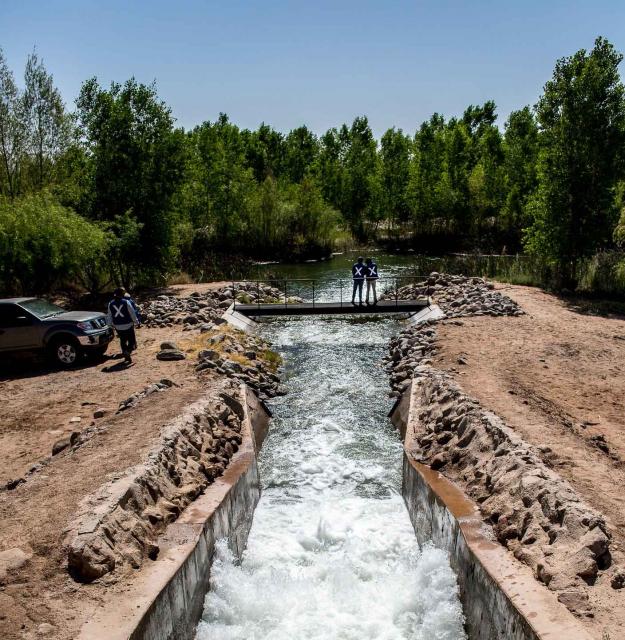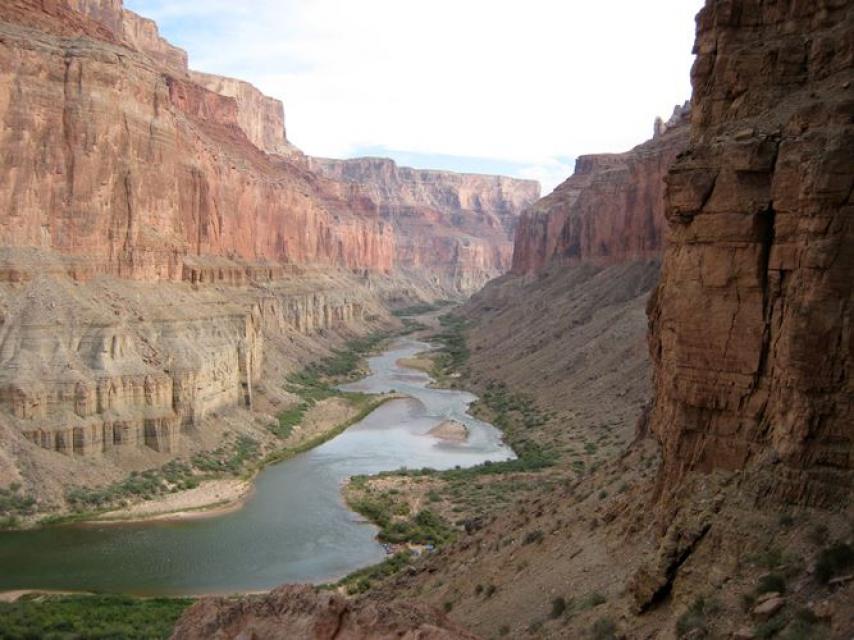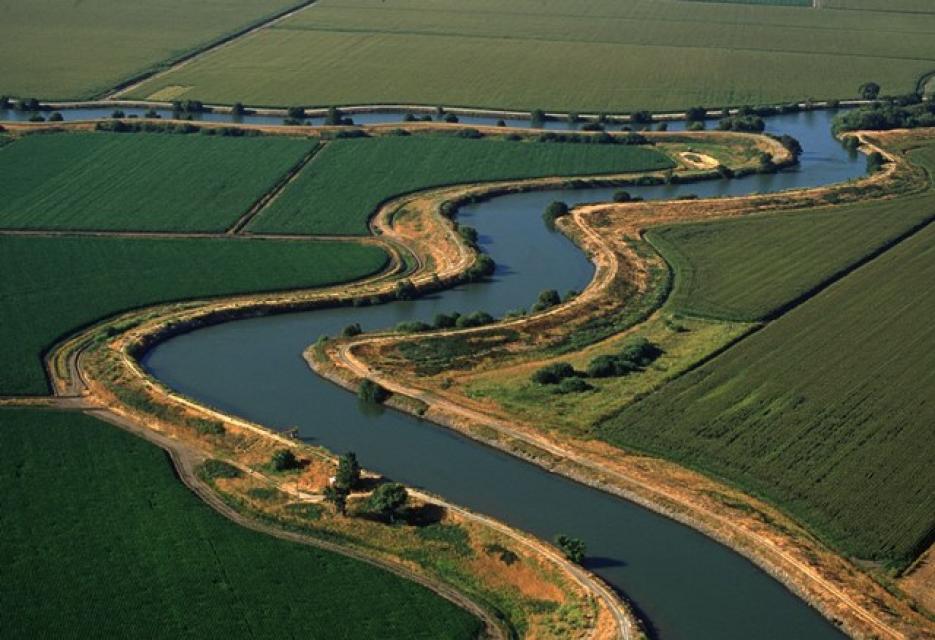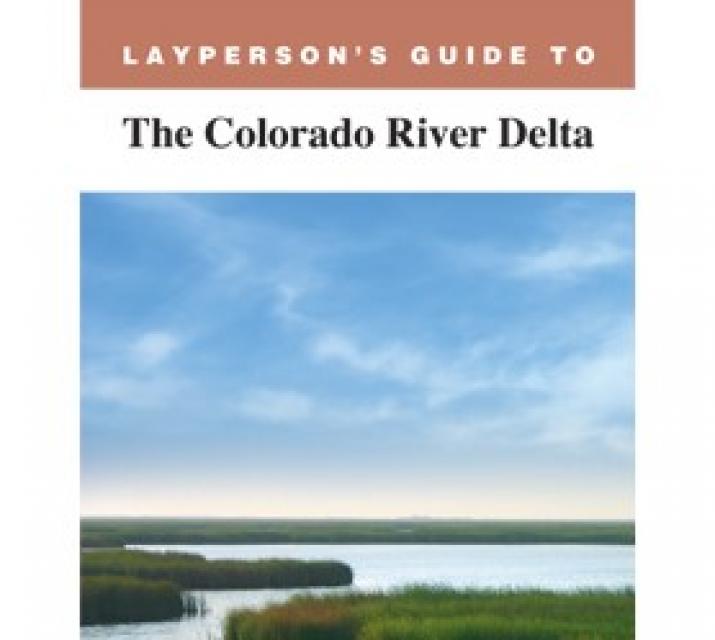Water-Starved Colorado River Delta Gets Another Shot of Life from the River’s Flows
READ OUR WESTERN WATER NOTEBOOK, WATER WORD OF THE DAY AND DON'T-MISS WATER READS FROM ACROSS THE WEST
Dear Western Water readers:
 Water is flowing once again in the
Colorado River’s delta in Mexico, a vast region that was once a
natural splendor before the iconic Western river was dammed and
diverted at the turn of the last century, essentially turning the
delta into a desert. The idea emerged in 2012 that water
could be intentionally sent down the river to the delta to
inundate the floodplain and regenerate native trees, even in an
overallocated river system.
Water is flowing once again in the
Colorado River’s delta in Mexico, a vast region that was once a
natural splendor before the iconic Western river was dammed and
diverted at the turn of the last century, essentially turning the
delta into a desert. The idea emerged in 2012 that water
could be intentionally sent down the river to the delta to
inundate the floodplain and regenerate native trees, even in an
overallocated river system.
Ultimately, dedicated flows of river water were brokered under cooperative efforts by the U.S. and Mexican governments. It’s an audacious experiment, but it comes this time despite shortages elsewhere on the drought-stressed Colorado River, which supplies water to millions of people in the Southwest and large swaths of farmland. Read the article here.
Water Around the West
Five don’t-miss articles from around California and the West:
West Nile virus: another alarming side effect of US drought: The Guardian’s Gabrielle Canon writes that the West Nile virus was once associated with higher humidity and moisture, conditions that help mosquitoes thrive. But a growing body of research has found that drought conditions – such as those being felt across the American west – could amplify its effects.
In an arid U.S. West, water agencies look to deliver purified wastewater directly to customers’ faucets, despite “yuck factor”: Ensia’s Sharon Udasin writes that western water agencies aim to reuse as much wastewater as possible, including from the stable supply direct potable reuse promises. As San Diego discovered decades ago, making direct potable reuse a reality entails trying to overcome the “yuck factor.”
Can reviving beach dunes help California with sea level rise? With the looming threat of sea level rise and a state desperate for solutions, conservationists and a growing movement of researchers say restoring coastal dunes could provide a much-needed buffer from the water. These overlooked features of the coast could help buy communities a bit more time — before the ocean pushes inland and reclaims the land. The Los Angeles Times’ Rosanna Xia reports.
Drought forces first water cuts on the Colorado River. They’re just the beginning: Politico’s Annie Snider explains how the sprawling Colorado River watershed has thus far been a success story for climate change adaptation, but as it enters a new era of water scarcity, the limits of political buy-in for that approach are being tested.
The well fixer’s warning: Author Mark Arax, writing in The Atlantic, profiles a San Joaquin Valley farmer and well driller who fixes the wells that he knows are helping to drain the overtapped aquifer, yet knows that the unsustainable rate of pumping has to end if agriculture is to survive in the valley.
Water Word of the Day
 The Colorado River’s natural terminus
is the Gulf of California in Mexico, but because of the dams and
diversion facilities throughout the Colorado River Basin, natural
flow rarely reaches the Gulf. The Mexican Water Treaty of 1944
committed the U.S. to deliver 1.5 million acre-feet of water to
Mexico on an annual basis, plus an additional 200,000 acre-feet
under surplus conditions. Water is primarily used to
irrigate Mexicali Valley farmland and supply the cities of
Mexicali, Tecate and Tijuana. You can read more about the
Colorado River Water
and Mexico and other water-related issues in
Aquapedia, our free
online water encyclopedia.
The Colorado River’s natural terminus
is the Gulf of California in Mexico, but because of the dams and
diversion facilities throughout the Colorado River Basin, natural
flow rarely reaches the Gulf. The Mexican Water Treaty of 1944
committed the U.S. to deliver 1.5 million acre-feet of water to
Mexico on an annual basis, plus an additional 200,000 acre-feet
under surplus conditions. Water is primarily used to
irrigate Mexicali Valley farmland and supply the cities of
Mexicali, Tecate and Tijuana. You can read more about the
Colorado River Water
and Mexico and other water-related issues in
Aquapedia, our free
online water encyclopedia.
At the Foundation
 Join us for a Sept. 9 virtual
journey into California’s most critical and
controversial water region in the state, the Sacramento-San
Joaquin Delta, and learn how the drought is affecting water
quality and supply. The Delta, a 720,000-acre network of
islands and canals, supports the state’s two large water systems
– the State Water Project and the federal Central Valley Project
– and, together with the San Francisco Bay, forms an important
ecological resource. You can learn more and sign
up for the Bay-Delta Tour here.
Join us for a Sept. 9 virtual
journey into California’s most critical and
controversial water region in the state, the Sacramento-San
Joaquin Delta, and learn how the drought is affecting water
quality and supply. The Delta, a 720,000-acre network of
islands and canals, supports the state’s two large water systems
– the State Water Project and the federal Central Valley Project
– and, together with the San Francisco Bay, forms an important
ecological resource. You can learn more and sign
up for the Bay-Delta Tour here.
Water Academy
 The Colorado River Delta once
spanned nearly 2 million acres and stretched from the northern
tip of the Gulf of California in Mexico to Southern California’s
Salton Sea. Today it’s one-tenth that size, yet still an
important estuary, wildlife habitat and farming region even
though Colorado River flows rarely reach the sea. Our Layperson’s
Guide to the Colorado River Delta explores the
history, geographic scope, environmental significance, role
within the Colorado River Basin and issues related to its
restoration. You can order yours here.
The Colorado River Delta once
spanned nearly 2 million acres and stretched from the northern
tip of the Gulf of California in Mexico to Southern California’s
Salton Sea. Today it’s one-tenth that size, yet still an
important estuary, wildlife habitat and farming region even
though Colorado River flows rarely reach the sea. Our Layperson’s
Guide to the Colorado River Delta explores the
history, geographic scope, environmental significance, role
within the Colorado River Basin and issues related to its
restoration. You can order yours here.








